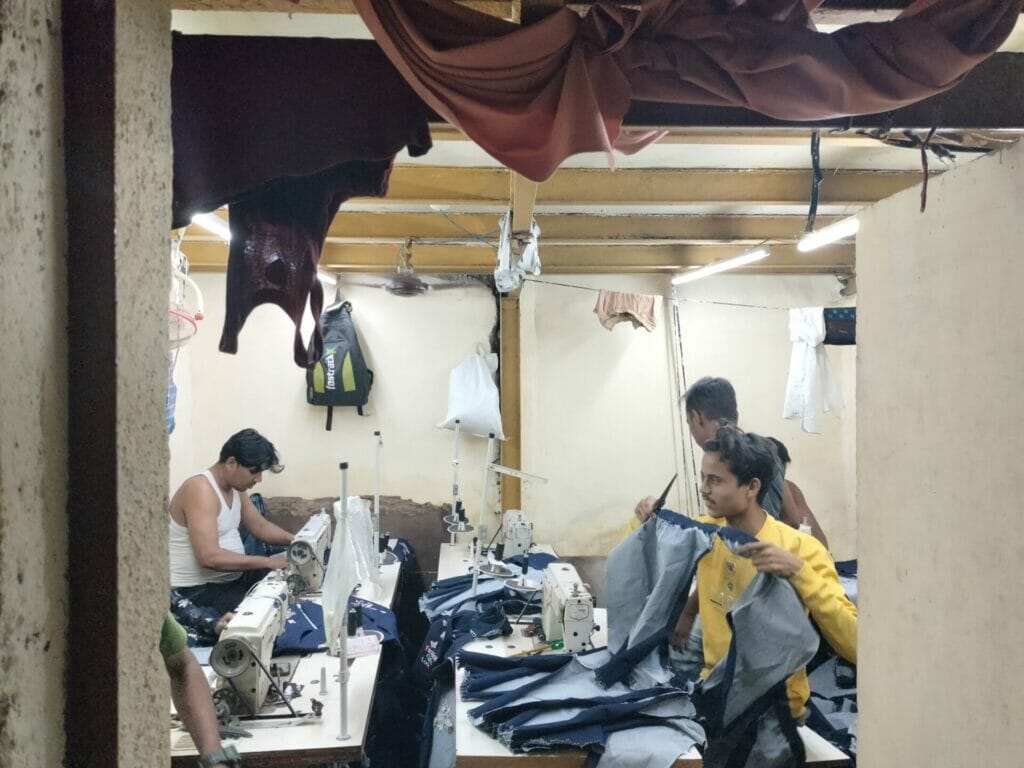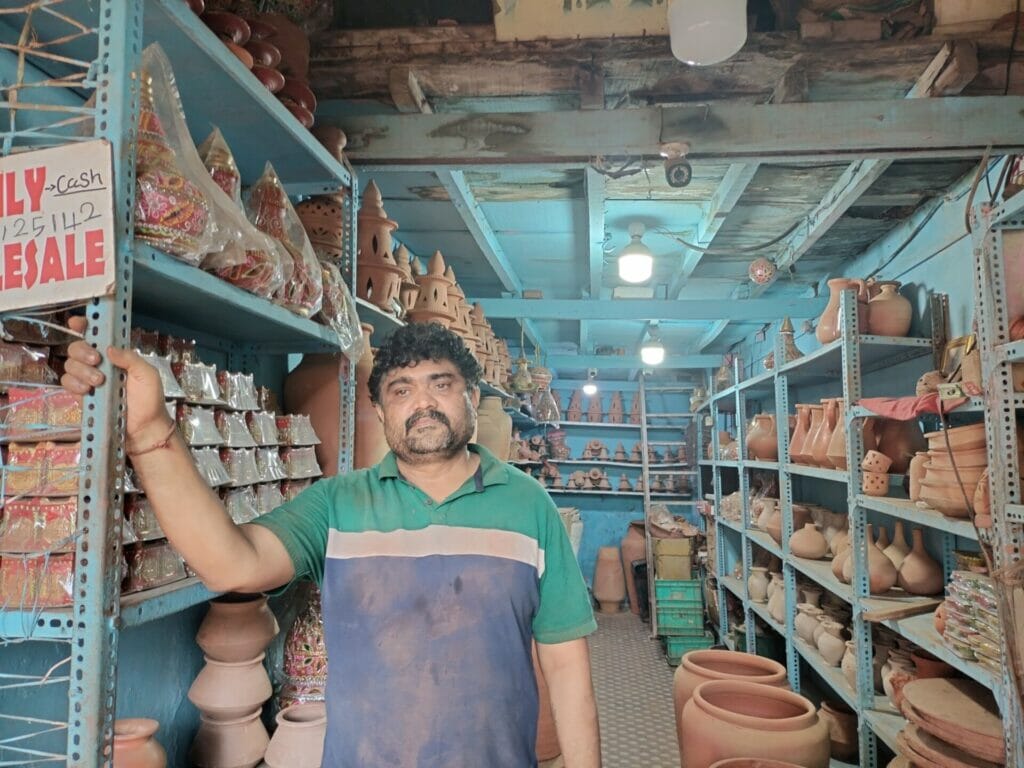“I have heard that Adani has taken over redevelopment of Dharavi but we know very little about it. But if we are moved from here, our livelihoods will take a hit,” says Vasudev Poonchakarmi, a sanitation worker in Dharavi.
The 50-year-old has been living in Shahu Nagar within Dharavi since childhood. His parents grew up in the area, so did his grandparents. Like him, his children are sanitation workers there. The news of Adani Group, owned by Gautam Adani, Asia’s richest man, winning the bid to redevelop Asia’s largest slum spread over 240 hectares, has seeped into the everyday conversations of thousands of families like his living in Dharavi’s narrow lanes.
But this is not the first time the residents have heard about such redevelopment projects. There have been announcements and rollbacks since the early 2000s. “They keep saying Dharavi will change and there will be big buildings, malls, this and that. But all talk.”
On December 23rd, Maharashtra cabinet approved the bid of the Adani group to redevelop Dharavi. The project is expected to start in the next six months and the government is aiming to rehabilitate all the residents within seven years. However, nearly a month after the redevelopment news broke, the people of Dharavi know very little about what the future holds for them.

The authorities are not oblivious to the communication gap that exists between them and approximately 8,50,000 slum dwellers. CEO of Dharavi redevelopment project and MMRDA Commissioner, SVR Srinivas, says, “At the moment, in Dharavi there is a lot of scepticism bordering on cynicism about the redevelopment project because the bid process went on for a generation. Twenty-years is a long time.”
“The most important challenge is going to be communication with Dharavi residents. The area has its own identity and its own social settlements. Keeping that in mind, we will be starting a continuous dialogue very soon. We want every resident to know where their house is going to be,” he asserts.
Read more: Dharavi women take to street vending to feed families
‘Dharavi slums is our source of employment’
One of Dharavi’s former corporators, Babbu Khan, says, “We do not have all the details of it as of now but just think about the impact this will have on migrant labourers. There are so many small industries here and worth crores of transactions happen here every day. What will happen to all of that?”
In the bylanes of Shahu Nagar, there is a small room with sewing machines, which is a home and workplace for a few migrant labourers from Jharkhand. They stitch clothes for their seth, who then sells them outside of Dharavi. The labourers don’t pay rent as their employer owns the room.
“We have been living here for the last ten years. We have heard from other people that there will soon be big buildings in Dharavi. If they start breaking Dharavi apart, our rozi roti will come to an end,” says Bilal Ansari, one of the workers. Each one of them earns about Rs 15,000 a month and sends part of it back home to their families in Jharkhand.

The government will be providing a 405-square-feet flat to each family living in authorised structures and those living in illegal structures will be provided with a 300 sq ft house with 50 sq ft fungible area. However, those like Bilal and his fellow workers fall into neither category. “This is a slum, that’s why we can work and live here, how can we work in big buildings? You’ll not find as many (migrant) labourers anywhere else as you’ll find here.”
Read more: Mumbai unlocks, but garment workers in Dharavi struggle to revive themselves
Who gets a free house?
The eligibility criteria for who gets a house and what kind of a house is a little more complicated. “Those structures that are standing up until January 1st, 2000, are eligible for free housing. Those who are there after the cut off date will be provided rental housing under Pradhan Mantri Awas Yojana’s (PMAY) preferably within 10 km,” says Srinivas.
Moreover, only those living on the ground floor of illegal structures are eligible for free housing while the others will be allotted rentals under PMAY. “Even if someone is there since 1970s but they are on the first floor, they are not eligible (for free housing)” says Srinivas.
Mumbai’s veteran urban planner Shirish Patel says the policy that differentiates between those living on the ground floor and those on the upper floor is unfair. “You may make a distinction between those who own the house and those who are in rented accommodation but the ownership, whether it is on one floor or two floor has to be respected,” he says.
A ‘Request for Qualification cum Request for Proposal’ document is issued during the bidding process to provide interested parties with information that may be useful to them in preparing their proposal. As mentioned earlier, Dharavi’s population is estimated to be a little over 8 lakhs, and the document states that 7 lakh people living on mezzanine and upper floors in slum structures will not be eligible for free housing.

Among other things, the document states, “Dharavi Redevelopment Project/Slum Rehabilitation Authority (DRP/SRA) shall be supported with a dedicated police force for maintaining public law and order, security and for vacating and removing the occupants from the illegal construction.” DRP/SRA is the nodal agency for the redevelopment project.
When asked if force will be used to vacate occupants, Srinivas says, “There is a provision under law for those who are unwilling to vacate. It is there for all SRA projects. But I don’t think it will come to that.”
What will they do for us?
The slums also house industries that manufacture leather, footwear, medicines, and the most well-known of it all is the pottery which is produced out of Kumbharwada. The area is dominated by Gujarati potters whose families have been living in Dharavi for a century. There are small brick kilns near their homes. The smoke from the kilns can be a nuisance for them and others around but their life and their livelihood are well established in the slums.
“It is not possible to shift us anywhere else now,” says Bharat R Taag, who has a pottery shop in the area. It has been nearly 100-years that his family has been living in Kumbharwada. “This is one of the biggest potter colonies in the country, how will they move us anywhere else even temporarily?”

We have some demands like facilitating smoke-free furnaces for us but no one has come to talk to us yet, Bharat says. “We live here, we eat here, our children are here and so much smoke comes out.” We don’t have a problem with redevelopment as long as our lives and livelihoods are improved and not destroyed,” he concludes.
Read more: The story of Dharavi’s elusive redevelopment
Part of what the potters are hoping for is already included in the rehabilitation plan. “Each industry has their own specific requirements but some of them are highly polluting and dangerous to their own lives. Government assistance will be provided to those units which are ready to upgrade to environment-friendly technologies,” Srinivas says.
“We are trying to accommodate requirement of all the industries but it may not be a 100 per cent. Complete consensus might not be possible but we will do the maximum.” He says businesses in Dharavi will be reimbursed with the state GST for five years on account of disturbances that they will face due to construction activities.
Meanwhile, Shirish is sceptical about the redevelopment project’s ability to benefit Dharavi’s industries. “I am not sure if the scheme (redevelopment) will adequately protect the connections residents have with their workplaces. Dharavi is as much of a working area as it is a residential area. There are all kinds of industries there. I don’t know if providing free housing for residents and nothing for industries or working places is going to work. It actually means destroying Dharavi as it is.”
‘Dharavi is world’s largest urban redevelopment project’
Ramabai Vakurde leaves for Chor Bazar from Dharavi at 4 am, where she sells clothes and utensils. The 55-year-old carries her goods and travels as far as Borivali to sell them door-to door. She was born in Dharavi, her children and her grandchildren were born in Dharavi.
“All my life I have struggled for toilets and water. They keep telling us that the slums will break and we will get a house in a building but it just doesn’t happen,” she says.

“We will ensure that Dharavi 2.0 is not the same as Dharavi 1.0. At present, no house has drinking water or a toilet. It is a sub-human existence in the 21st century. The project will provide security, safety, and entitlements to the residents as well businesses,” Srinivas says.
A “master plan” for Dharavi redevelopment will be prepared and shared with the residents. This plan will include details on rehabilitation, town planning, open spaces, social infrastructure (like hospitals, schools, temples) and physical infrastructure which will include water supply, sewerage, electricity. “We will start the construction rehab tenements in the next six months. We have 45 acres of land next to Dharavi itself.”
In a 2010 Economic and Political Weekly article, Shirish writes that Dharavi already has the highest living densities in the world and proposed redevelopment will triple these densities, making living there unviable. “The result could be that the present residents will sell out and flee, leaving Dharavi in the hands of high-income occupants living at more comfortable densities.”
He advocates for an alternative where essential infrastructure of water supply and sanitation is provided, rules for redevelopment are framed, and the construction is left up to the residents themselves to do as and when they wish to. In conversation with us, he explains, “If you give people the land without charge or at a nominal charge, they will build and finance their own construction.”
“What they cannot finance is the nine times that number with the land cost. The cost of construction of a 45 sq m apartment in say BDD chawls is about 15 lakhs, which can be taken up on a housing loan with a 20 years to repay with interest. That is manageable for most families, what is not manageable is payment for the land.”